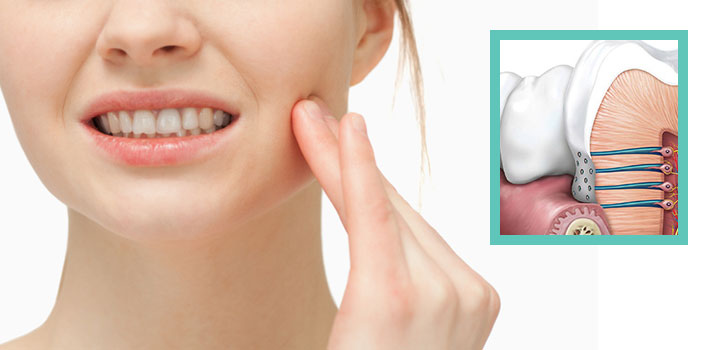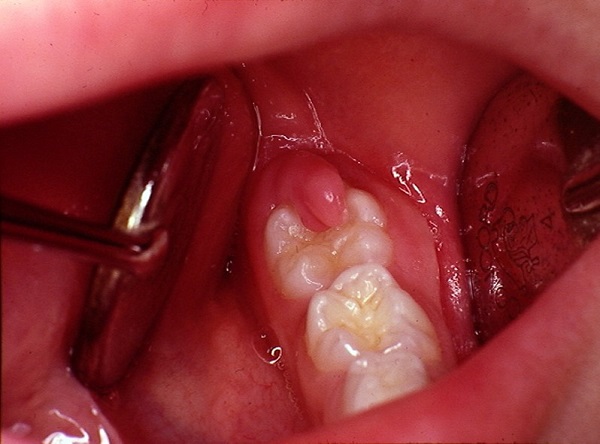Exposed Tooth Nerve

Understanding Exposed Nerve In Tooth : Causes, Symptoms, and Treatment Options
Exposed tooth nerve is a painful and often alarming dental condition that requires immediate attention. This condition occurs when the inner layers of the tooth, specifically the dentin or pulp, are exposed due to various factors such as decay, injury, or gum recession. Understanding the causes, symptoms, and treatment options for an exposed tooth nerve is crucial for maintaining oral health and preventing further complications.
Anatomy of a Tooth
To comprehend the issue of an exposed tooth nerve, it’s essential to understand the basic anatomy of a tooth. A tooth is composed of several layers:
- Enamel: The hard, outermost layer that protects the tooth from decay and physical damage.
- Dentin: The layer beneath the enamel, which is softer and contains microscopic tubules that connect to the tooth’s nerve.
- Pulp: The innermost part of the tooth that contains the nerve and blood vessels. The pulp is crucial for the nourishment and health of the tooth.
When the enamel is compromised, the dentin and pulp become vulnerable, leading to sensitivity and pain associated with an exposed tooth nerve.
Causes of Exposed Nerve In Tooth
Several factors can lead to an exposed tooth nerve, including:
1. Tooth Decay
Tooth decay, or cavities, is one of the most common causes of an exposed nerve in teeth. When bacteria in the mouth produce acids that erode the enamel, the underlying dentin and pulp can become exposed, resulting in pain and sensitivity.
2. Trauma or Injury
A physical injury, such as a cracked or broken tooth, can expose the nerve. Accidents, falls, or biting on hard objects can cause such injuries, leading to immediate and intense pain due to the exposed tooth nerve.

3. Gum Recession
Gum recession occurs when the gum tissue pulls away from the teeth, exposing the roots. Since the roots are not covered by enamel but by a softer material called cementum, they are more susceptible to decay and sensitivity, which can eventually expose the tooth nerve.
4. Tooth Wear and Erosion
Habitual teeth grinding (bruxism) or excessive consumption of acidic foods and beverages can wear down the enamel, leading to exposure of the dentin and the underlying nerve.
5. Dental Procedures
In some cases, dental procedures such as fillings, crowns, or root canals can lead to an exposed tooth nerve, especially if they are not performed correctly or if the tooth is already compromised.

Symptoms of an Exposed Tooth Nerve
An exposed tooth nerve is often accompanied by a range of symptoms, which can vary in intensity depending on the severity of the exposure. Common symptoms include:
1. Intense Pain
Pain is the most noticeable symptom of an exposed tooth nerve. This pain can be sharp, throbbing, or constant and is often aggravated by eating, drinking, or touching the affected tooth.
2. Sensitivity to Temperature
An exposed tooth nerve can make the tooth extremely sensitive to hot and cold temperatures. Drinking a cold beverage or eating hot food can trigger immediate and severe pain.
3. Sensitivity to Sweets
Sugary foods and drinks can also cause pain in a tooth with an exposed nerve. The sugars can penetrate the exposed dentin and irritate the nerve, leading to discomfort.
4. Swelling and Inflammation
In some cases, the area around the affected tooth may become swollen and inflamed. This can be a sign of an infection or abscess, which requires prompt dental treatment.
5. Discoloration
The affected tooth may appear discolored, often turning darker or greyish, indicating damage to the pulp and the presence of an exposed tooth nerve.

Diagnosing an Exposed Tooth Nerve
If you suspect you have an exposed tooth nerve, it is essential to visit a dentist as soon as possible. The dentist will conduct a thorough examination to determine the cause and extent of the exposure. Diagnostic steps may include:
1. Visual Examination
The dentist will visually inspect the affected tooth for signs of decay, cracks, or gum recession. They may also check for any swelling or discoloration.
2. Dental X-rays
X-rays can provide a detailed view of the tooth’s internal structure, helping the dentist identify any underlying issues such as cavities, fractures, or infections that may be causing the exposed tooth nerve.
3. Sensitivity Tests
The dentist may perform sensitivity tests using cold or hot stimuli to determine the extent of nerve exposure and the tooth’s response to temperature changes.
4. Percussion Tests
Tapping the tooth gently with a dental instrument can help assess the level of pain and inflammation associated with the exposed nerve.
Treatment Options for an Exposed Tooth Nerve
Treating an exposed tooth nerve promptly is crucial to alleviate pain and prevent further complications. The treatment approach will depend on the cause and severity of the exposure. Common treatment options include:
1. Dental Fillings
If the exposed tooth nerve is due to a cavity, the dentist may remove the decayed portion of the tooth and fill the cavity with a dental filling. This helps protect the nerve and restore the tooth’s structure.
2. Dental Crowns
For more extensive damage or a cracked tooth, a dental crown may be recommended. The crown covers the entire tooth, providing protection and preventing further exposure of the nerve.
3. Root Canal Therapy
In cases where the pulp is infected or severely damaged, root canal therapy may be necessary. This procedure involves removing the infected pulp, cleaning the root canals, and sealing them to prevent further infection. A crown is usually placed over the tooth after the root canal to provide additional protection.

4. Gum Grafting
If gum recession is the cause of the exposed tooth nerve, a gum graft may be performed. This procedure involves taking tissue from another part of the mouth and grafting it onto the receded area to cover the exposed roots and protect the nerve.
5. Desensitizing Agents
For minor cases of nerve exposure, desensitizing agents such as fluoride gels or varnishes may be applied to the affected tooth. These agents help reduce sensitivity and protect the nerve from further irritation.
6. Bonding
Dental bonding involves applying a tooth-colored resin to the affected area, which is then shaped and polished to match the natural tooth. This can help cover exposed dentin and protect the nerve from further damage.
7. Tooth Extraction
In severe cases where the tooth cannot be saved, extraction may be necessary. The dentist will remove the affected tooth and discuss options for replacing it, such as dental implants or bridges.

Preventing Exposed Nerve In Tooth
Preventing an exposed tooth nerve involves maintaining good oral hygiene and adopting healthy habits to protect your teeth and gums. Here are some preventive measures to consider:
1. Practice Good Oral Hygiene
Brush your teeth at least twice a day with fluoride toothpaste and floss daily to remove plaque and prevent cavities. Regular dental check-ups and cleanings are also essential for maintaining oral health.
The Ultimate Guide to Oral Hygiene
2. Avoid Excessive Sugar and Acidic Foods
Limit your intake of sugary and acidic foods and beverages, as they can erode enamel and increase the risk of tooth decay. If you consume these foods, rinse your mouth with water afterward to help neutralize the acids.
3. Use a Mouthguard
If you grind your teeth at night (bruxism), wearing a mouthguard can help protect your teeth from excessive wear and prevent an exposed tooth nerve.
4. Avoid Hard Foods and Objects
Avoid chewing on hard foods or objects, such as ice, pens, or popcorn kernels, as they can cause cracks or fractures in your teeth, leading to nerve exposure.
5. Address Gum Disease
If you notice signs of gum disease, such as bleeding, swelling, or receding gums, seek dental treatment promptly. Managing gum disease can help prevent gum recession and protect the roots of your teeth.
Home Remedies for Temporary Relief
While professional dental treatment is essential for an exposed tooth nerve, some home remedies may provide temporary relief from pain and discomfort until you can see a dentist. These remedies include:
1. Saltwater Rinse
Rinsing your mouth with warm salt water can help reduce inflammation and cleanse the affected area. Mix half a teaspoon of salt in a glass of warm water and rinse your mouth several times a day.
2. Clove Oil
Clove oil has natural analgesic and anti-inflammatory properties. Applying a small amount of clove oil to a cotton ball and placing it on the affected tooth can help numb the pain and reduce inflammation.
3. Over-the-Counter Pain Relievers
Non-prescription pain relievers, such as ibuprofen or acetaminophen, can help alleviate pain and reduce inflammation. Follow the dosage instructions on the label and avoid placing the medication directly on the tooth or gums.
4. Cold Compress
Applying a cold compress to the outside of your cheek near the affected tooth can help reduce swelling and numb the pain. Use the cold compress for 15-20 minutes at a time.
5. Garlic
Garlic has antibacterial properties that can help reduce infection and pain. Crush a garlic clove to form a paste and apply it to the affected tooth for a few minutes before rinsing your mouth.
6. Peppermint Tea Bags
Peppermint tea bags can provide a soothing effect on an exposed tooth nerve. After brewing a peppermint tea bag, allow it to cool and then place it on the affected tooth for relief.
The Strongest Toothache Medicine: Best Pain Relievers for Tooth Nerve Pain and Toothache Relief
When to See a Dentist
While home remedies can offer temporary relief, it is crucial to see a dentist if you suspect you have an exposed tooth nerve. Delaying professional treatment can lead to further complications, such as infection or tooth loss. Seek immediate dental care if you experience:
- Severe and persistent tooth pain
- Swelling or inflammation around the affected tooth
- Fever or signs of infection, such as pus or an abscess
- Difficulty chewing or biting
- Discoloration or darkening of the tooth
Conclusion
An exposed tooth nerve is a serious dental issue that requires prompt attention and treatment. Understanding the causes, symptoms, and available treatment options can help you take proactive steps to protect your oral health and prevent further complications. Maintaining good oral hygiene, avoiding habits that can damage your teeth, and seeking regular dental check-ups are essential for preventing an exposed tooth nerve and ensuring a healthy, pain-free smile. If you suspect you have an exposed tooth nerve, don’t hesitate to contact a dentist for a thorough examination and appropriate treatment.
References:
- An Insight Into Neurophysiology of Pulpal Pain: Facts and Hypotheses
- The neurophysiology of the teeth
How Do You Treat an Exposed Tooth Nerve?
Immediate and Professional Treatments for an Exposed Tooth Nerve
An exposed tooth nerve can cause severe pain and requires prompt treatment to prevent further complications:
1. Immediate Home Care:
- Rinse with Salt Water: Rinsing your mouth with warm salt water can help cleanse the area and reduce bacteria.
- Apply Clove Oil: Clove oil has natural anesthetic properties that can provide temporary pain relief. Apply it with a cotton swab directly to the affected area.
- Use Over-the-Counter Pain Relievers: Medications like ibuprofen or acetaminophen can help manage pain and reduce inflammation.
2. Professional Dental Treatments:
- Dental Filling: If the exposure is due to a small cavity, a dental filling might be enough to cover the exposed nerve and restore the tooth.
- Crown: For more extensive damage, a crown can cover and protect the tooth.
- Root Canal: If the nerve is significantly damaged or infected, a root canal may be necessary to remove the affected nerve tissue and seal the tooth.
- Extraction: In severe cases where the tooth cannot be saved, extraction might be the only option.
Can a Tooth Be Fixed if the Nerve is Exposed?
Treatment Options for Exposed Tooth Nerves
Yes, a tooth with an exposed nerve can be treated, depending on the extent of the damage:
1. Minor Exposure:
- Dental Fillings: Small cavities or chips exposing the nerve can often be treated with a simple filling to seal the area and protect the nerve.
- Dental Bonding: For minor damage, bonding can cover the exposed nerve and restore the tooth’s structure.
2. Moderate Exposure:
- Crowns: For more substantial damage, a crown can provide complete coverage and protection for the tooth, preventing further exposure and damage.
- Pulp Capping: In some cases, a dentist might use a pulp cap to protect the nerve and encourage healing.
3. Severe Exposure:
- Root Canal Therapy: When the nerve is severely damaged or infected, a root canal is often necessary to remove the damaged nerve tissue and seal the tooth.
- Extraction: If the tooth is beyond repair, extraction may be the only option, followed by a dental implant or bridge to replace the lost tooth.
How Long Will an Exposed Tooth Nerve Hurt?
Duration and Management of Pain from an Exposed Tooth Nerve
The duration of pain from an exposed tooth nerve can vary based on the severity of the exposure and the treatment received:
1. Immediate Pain:
- Intense and Sharp: Pain from an exposed nerve is usually immediate and intense, often described as sharp or throbbing.
- Triggered by Stimuli: The pain can be triggered by hot, cold, sweet, or acidic foods and drinks.
2. After Treatment:
- Post-Treatment Relief: Pain typically subsides significantly after professional treatment such as a filling, crown, or root canal.
- Temporary Discomfort: There may be some temporary discomfort or sensitivity following treatment, but this should diminish within a few days.
3. Without Treatment:
- Persistent Pain: Without treatment, the pain from an exposed nerve is likely to persist and may worsen over time.
- Risk of Infection: Continued exposure increases the risk of infection, which can lead to more severe pain and complications.
Can an Exposed Nerve Heal Itself?
Natural Healing Potential of an Exposed Tooth Nerve
An exposed tooth nerve cannot heal itself and requires professional dental intervention:
1. Lack of Regenerative Capability:
- No Natural Healing: Unlike other tissues in the body, tooth nerves do not have the ability to regenerate or heal themselves once exposed.
- Continued Exposure: Leaving the nerve exposed can lead to increased pain, infection, and further damage to the tooth.
2. Need for Professional Treatment:
- Protective Measures: Professional treatment is necessary to cover and protect the exposed nerve, whether through fillings, crowns, or more extensive procedures like root canals.
- Preventing Complications: Timely intervention is crucial to prevent infection and preserve the health of the tooth and surrounding tissues.
Can Dental Nerves Heal?
Healing Potential and Treatments for Dental Nerves
Dental nerves have limited healing potential and often require intervention to manage damage or exposure:
1. Limited Regeneration:
- No Natural Regeneration: Dental nerves do not regenerate once damaged or exposed, necessitating professional treatment to address the issue.
- Continued Pain: Without treatment, the damaged nerve can continue to cause pain and lead to further complications.
2. Professional Treatments:
- Root Canal Therapy: This procedure removes the damaged nerve tissue, cleans the canal, and seals it to prevent further infection or damage.
- Pulp Capping: In cases where the nerve is irritated but not severely damaged, pulp capping can help protect the nerve and encourage healing.
How to Stop Tooth Nerve Pain Fast at Home?
Immediate Relief for Tooth Nerve Pain
While professional treatment is essential, there are ways to manage tooth nerve pain at home temporarily:
1. Pain Relief:
- Over-the-Counter Pain Relievers: Medications like ibuprofen, acetaminophen, or aspirin can help manage pain and reduce inflammation.
- Topical Anesthetics: Gels or creams containing benzocaine can provide temporary numbness to the affected area.
2. Natural Remedies:
- Clove Oil: Applying clove oil directly to the affected area can provide temporary pain relief due to its natural anesthetic properties.
- Salt Water Rinse: Rinsing your mouth with warm salt water can help cleanse the area and reduce bacteria, providing some relief.
3. Avoiding Triggers:
- Dietary Adjustments: Avoid hot, cold, sweet, and acidic foods and drinks that can trigger pain.
- Gentle Brushing: Use a soft-bristled toothbrush and avoid brushing too hard around the affected area.
4. Cold Compress:
- Reducing Inflammation: Applying a cold compress to the outside of your cheek near the affected area can help reduce inflammation and numb the pain.
5. Dental Appointment:
- Professional Evaluation: While these home remedies can provide temporary relief, it’s crucial to see a dentist as soon as possible for a thorough evaluation and appropriate treatment.
Will Antibiotics Help an Exposed Tooth Nerve?
Role of Antibiotics in Treating Exposed Tooth Nerves
Antibiotics can be useful in certain cases involving an exposed tooth nerve, but they are not a primary treatment:
1. Infection Control:
- Treating Infections: If the exposed nerve has led to an infection, antibiotics can help control the infection and reduce related symptoms such as swelling and pain.
- Preventing Spread: Antibiotics may be prescribed to prevent the spread of infection to surrounding tissues and bone.
2. Not a Cure for Exposure:
- Temporary Relief: While antibiotics can address infection, they do not treat the underlying cause of nerve exposure. The exposed nerve itself will still need professional dental treatment.
- Necessary Dental Procedures: Dental procedures like fillings, crowns, or root canals are necessary to cover the exposed nerve and provide long-term relief.
What Do Dentists Do to Exposed Nerves?
Professional Treatments for Exposed Tooth Nerves
Dentists have several approaches to treating exposed tooth nerves, depending on the severity of the exposure and the overall health of the tooth:
1. Temporary Solutions:
- Dental Sealants: Dentists might use a temporary sealant to cover the exposed nerve and provide immediate relief.
- Temporary Fillings: A temporary filling can protect the nerve until a more permanent solution is implemented.
2. Permanent Solutions:
- Fillings: For minor exposures caused by cavities, a dental filling can effectively seal the tooth and protect the nerve.
- Crowns: For more extensive damage, a crown can cover the entire tooth, providing comprehensive protection for the exposed nerve.
- Root Canal Therapy: If the nerve is significantly damaged or infected, a root canal may be necessary. This procedure removes the damaged nerve tissue, disinfects the area, and seals the tooth to prevent further issues.
- Extractions: In cases where the tooth cannot be saved, extraction might be necessary to alleviate pain and prevent complications.
Will Pulling a Tooth Stop Nerve Pain?
Effectiveness of Tooth Extraction for Nerve Pain
Tooth extraction can stop nerve pain, especially in severe cases where the tooth cannot be saved:
1. Immediate Relief:
- Pain Source Removal: Extracting the tooth removes the source of the nerve pain, providing immediate relief from the intense discomfort associated with an exposed or damaged nerve.
- Preventing Spread: Extraction can prevent the spread of infection or damage to adjacent teeth and tissues.
2. Post-Extraction Considerations:
- Healing Period: There will be a healing period following the extraction, during which you might experience some discomfort, but this is typically manageable with over-the-counter pain relievers.
- Replacement Options: After extraction, you may need to consider options for replacing the missing tooth, such as dental implants, bridges, or partial dentures, to restore function and aesthetics.
Does Salt Water Help a Broken Tooth?
Benefits of Salt Water Rinse for a Broken Tooth
Salt water can provide several benefits for a broken tooth, particularly in terms of managing symptoms and promoting oral health:
1. Cleansing:
- Reduces Bacteria: Rinsing with warm salt water helps reduce bacteria in the mouth, lowering the risk of infection around the broken tooth.
- Cleansing Effect: The rinse can help cleanse the area, removing food particles and debris that could irritate the broken tooth.
2. Pain Relief:
- Soothing Effect: Salt water has a soothing effect on inflamed tissues, which can help reduce pain and discomfort around the broken tooth.
- Reducing Swelling: It can also help reduce swelling and inflammation in the affected area.
3. Temporary Relief:
- Short-Term Measure: While salt water rinses can provide temporary relief, they are not a substitute for professional dental treatment. A dentist needs to evaluate and treat the broken tooth to prevent further complications.
What Medicine is Good for Tooth Nerve Pain?
Effective Medications for Managing Tooth Nerve Pain
Several medications can help manage the pain associated with an exposed or irritated tooth nerve:
1. Over-the-Counter Pain Relievers:
- Ibuprofen: This nonsteroidal anti-inflammatory drug (NSAID) helps reduce pain and inflammation.
- Acetaminophen: Effective for pain relief, although it does not have anti-inflammatory properties.
- Aspirin: Another NSAID that can help alleviate pain and reduce inflammation.
2. Topical Anesthetics:
- Benzocaine: Available in gels or liquids, benzocaine can be applied directly to the affected area for temporary numbing relief.
- Orajel: A common over-the-counter product containing benzocaine, designed for dental pain relief.
3. Prescription Medications:
- Stronger Painkillers: In severe cases, a dentist may prescribe stronger pain medications, such as opioids, for short-term pain management.
- Antibiotics: If an infection is present, antibiotics may be prescribed to address the underlying issue contributing to the nerve pain.
Is an Exposed Tooth Nerve an Emergency?
Assessing the Urgency of an Exposed Tooth Nerve
An exposed tooth nerve is considered a dental emergency due to the severe pain and potential complications it can cause:
1. Immediate Pain and Discomfort:
- Severe Pain: The pain from an exposed nerve can be intense and debilitating, often requiring immediate attention to manage discomfort.
- Sensitivity: Exposed nerves are highly sensitive to temperature changes, pressure, and even air, making eating and drinking very uncomfortable.
2. Risk of Infection:
- Bacterial Invasion: The exposed nerve and surrounding tissues are at risk of bacterial infection, which can lead to abscesses and more serious oral health issues.
- Rapid Spread: Infections can spread quickly, affecting other teeth and even leading to systemic health problems if not promptly treated.
3. Need for Prompt Treatment:
- Preventing Complications: Immediate professional treatment is necessary to cover the exposed nerve, manage pain, and prevent further damage or infection.
- Long-Term Solutions: Depending on the severity, treatments may include fillings, crowns, root canal therapy, or extractions to address the issue effectively.
In summary, while home remedies and over-the-counter medications can provide temporary relief for an exposed tooth nerve, professional dental treatment is essential for addressing the underlying problem and preventing complications. An exposed tooth nerve is a dental emergency that requires prompt attention to alleviate pain and protect oral health.









